English Carrier Pigeons Breed Guide
Since its creation, the British carrier has gone through a huge transformation from being a English Carrier Pigeons (messenger bird) to a show bird.
Now they are only seen in exhibitions and appreciated for their beautiful appearance.
Thanks to their history of winning many exhibitions, they maintain a great appeal and interest among the fanciers.
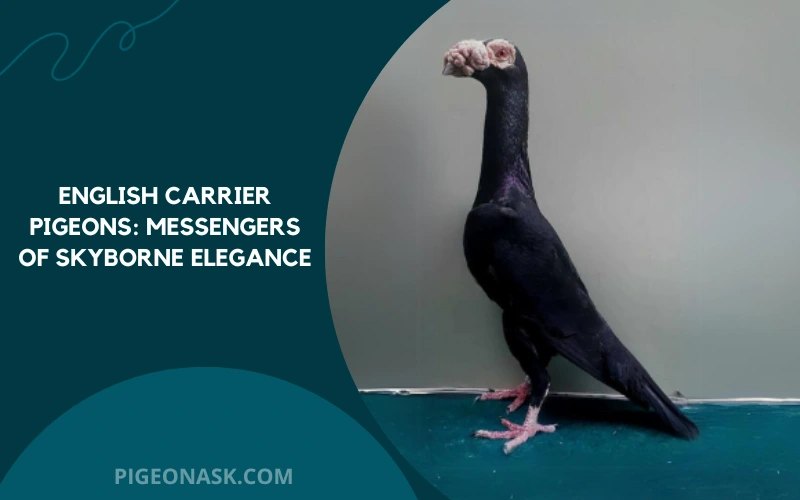
If you’re thinking about getting these pairs, learn about their history, nature, and diet here.
Interested in similar topics on pigeon breed:
English Carrier Pigeons Profile
| Name | English Carrier Pigeon |
|---|---|
| Scientific Name | Columba Livia Domestica |
| Common Names | None |
| Origin | England |
| Weight | 550-650 grams |
| Primary Use | Exhibition |
| Homing Ability | Not good enough for long-distance flights |
| Colors | Black, White, and Dun |
| Behavior | Usually mild |
| Size | Large |
| Breeding | Easy |
History And Origin of English Carrier Pigeon
This breed was developed in England after combining several breeds like the pouter, the Horseman, and Baghdad Carriers.
The horseman was a Persian breed that was also used as a messenger. Though it had great value, the English carrier was far more stronger and powerful than its ancestor.
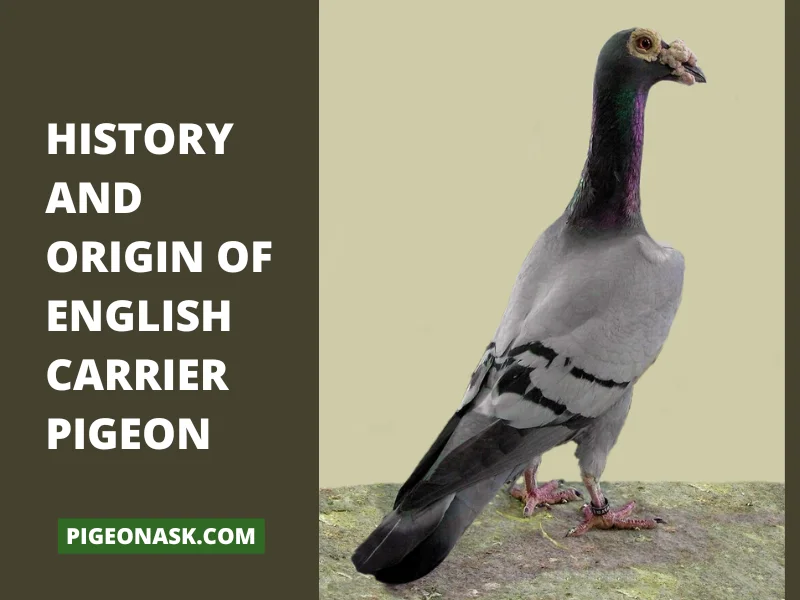
At that time the main purpose of breeding the English carrier was to use them for communication. The English breeders termed it the most popular breed in the 17th century.
Exactly when English carriers made their entry into the us and Canada market can’t be confirmed. In recorded history, we can find the first mention of the breed in the Harper’s Weekly in 1879.
In the mid-19th century, the English carrier was designated as an exhibition bird and since then it has been exclusively a show bird.
Physical Characteristics And Features
The head of the pigeon is long, narrow, and flattened at the crown. The eye is bright red surrounded by rosette skin. The bill is straight, thick, and quite long.
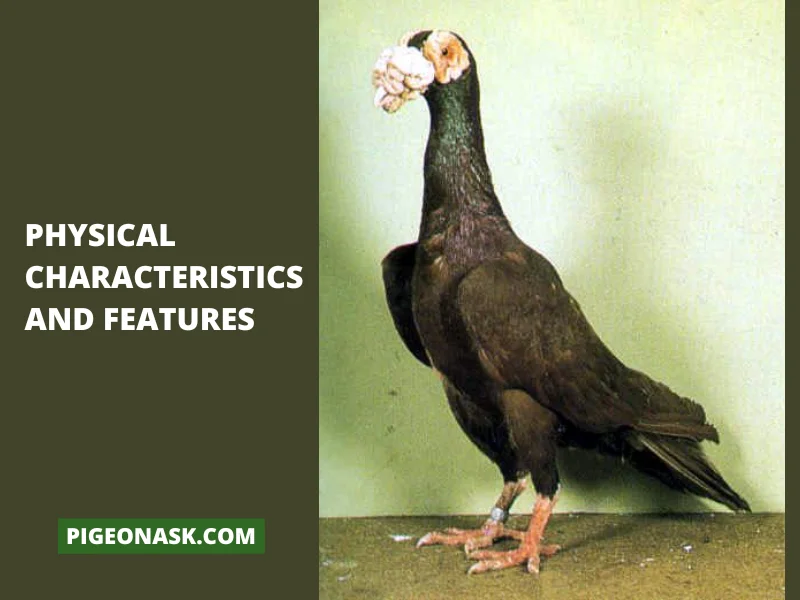
The neck is long and slightly bent, small toward the head, and regular in size toward the body.
Most of these birds are black, white, and dun colored. The average weight of these pigeons is 550-650 grams.
Breeding And Maintenance
Breeding is fairly easy and the British carriers breed quite well. They’re happy to mate and you don’t have to make any special arrangements. After hatching they will take care of the kid and feed it as well.
However, you may be surprised to see that the parents stop feeding the kids after 1-2 weeks.
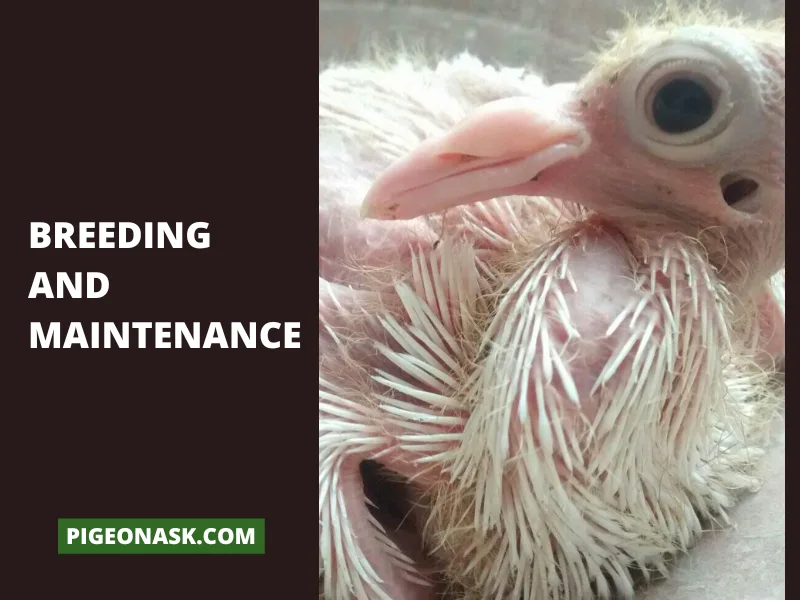
That’s because these pigeons normally abandon the kids when they are 10-14 days old. After they start the courting process and soon begin mating again.
What you can do is find another pair to foster the kids or feed them yourself. After 2 weeks, they don’t need much care and as long as you’re feeding them, they should be fine.
Behavior And Traits of English Carrier Pigeons
They are domesticated pigeons and are usually calm and gentle with others. However, some can act aggressively in certain situations like territorial issues or courting competition.
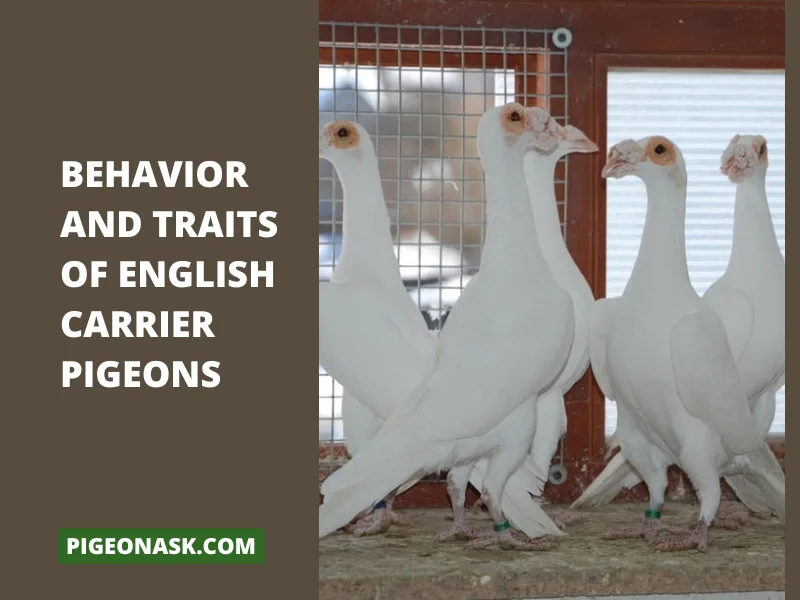
But those aren’t very common and in general, they are nice. You should face no problem keeping them as pets with other pigeons.
They’re very good at adapting to cold weather. As they haven’t been bred in warmer climates much, there’s not enough data regarding adaptability to warmer climates like South Asia.
What’s The Primary Use for English Carriers?
Earlier it was used as a messenger, but in the modern world, they are only used for exhibitions.

After they were designated as show birds their colors were limited to only black, white, and dun colors.
Apart from Britain, English carriers have a lot of admirers in Canada and us and are common participants in exhibitions in those countries.
Do English Carriers Have Homer Ability?
All pigeons retain some sort of homing ability, otherwise, they wouldn’t be able to return to their loft. However, if they are taken too far from their home, they won’t be able to return by themselves.
Due to years of selective breeding, they have lost most of their homing ability. So, don’t send them out with your homer pigeons.
Diet of English Carrier Pigeons
They eat grain and seeds like any other pigeon breed. For quality control, you need to find a good pigeon food brand. During the breeding season, give them more food than usual and increase their mineral intake as well.
Conclusion
English carriers were a result of a blend of distinctly different but amazing pigeon breeds. Over the years they have evolved from messengers to show birds thanks to their attractive appearance.
Also, due to their mild nature, low maintenance, and inexpensive diet, they make a strong case for being an ideal pet.
References:
- https://watchbird-ojs-tamu.tdl.org/watchbird/article/view/2381
- https://pigeoncote.com/standards/carrier/npacarri.html
- https://www.wikiwand.com/en/English_Carrier_pigeon
